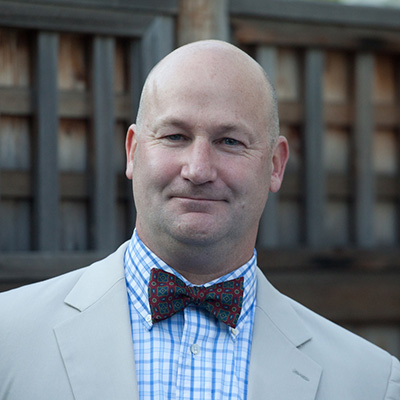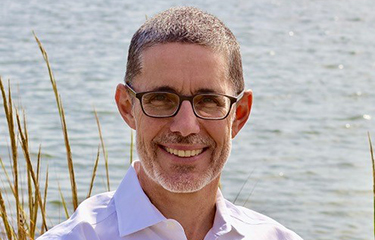Over the last 20 years, fisheries consultant Miguel Angel Jorge has been working at the cross-section of fisheries management, sustainable development, and innovative finance with small fishing communities and institutions like the World Bank, the National Geographic Society, and WWF. As the seafood industry looks to engage more supply from small-scale and artisanal fishers, SeafoodSource asked Angel Jorge to explain three models that could be used to support and empower local fishing communities. These models – co-management, shared value, and productive alliances – have been applied in some fisheries, but more commonly in other natural resource sectors and agriculture.
SeafoodSource: Can you give an introduction to the differences between the co-management, shared value, and productive alliances?
Angel Jorge: As the name implies, co-management establishes formal and explicit sharing of responsibilities/roles between the government and resource users. Co-management is more than consultation or “participatory management;" It often includes explicit roles for fishermen and organizations in data collection, monitoring catches, and setting catch limits. In contrast, shared value is a concept focused on private enterprises and how they can enhance their competitiveness while improving the economic and social conditions in the communities where they operate. For the seafood industry, which sources from capture fisheries around the world, this raises the question of how buyers and brands can contribute to the wellbeing of the fishing communities they supply from – not through charity, but for more systemic change. Finally, productive alliances were designed and applied by the World Bank over the last 20 years to alleviate rural poverty by addressing market imperfections that constrain smallholder producers’ socioeconomic progress. Productive alliances (PAs) bring together buyers, the government, and a sizable group of small-scale producers around a business plan designed to upgrade the value of their products and strengthen their linkages to the market. Productive alliances also require a co-financing mechanism to implement the business plan.
SeafoodSource: How do fishery improvement projects (FIPs) compare with these models?
Angel Jorge: There are clear overlaps between how FIPs have been conceived and these models. In my view, however, FIPs have been intentionally simplistic in their design, with targets and timelines for specific sustainability milestones but with little thought given to the socioeconomic reality on the ground and the need to integrate this reality when seeking behavior-change. In my experience, many FIPs targeting small-scale fisheries simply don’t progress because the “market demand” theory-of-change underpinning FIPs does not consider local economies. That’s why productive alliances center around sustainable business models. Buyers that support FIPs that haven’t made much progress might want to ask themselves how they can better support their suppliers to becoming sustainable small-scale fishing enterprises in resilient communities. FIPs are not designed to do that.
SeafoodSource: Are there some examples of these models working well in fisheries?
Angel Jorge: I get asked this question often, but unfortunately, I know of only a few success stories outside developed economies where fisheries governance is stronger. From Asia to Africa, what I’ve mainly seen are small-scale fishermen with limited economic options, vulnerable to the whims of politicians, powerful buyers, and climate change. In contrast, the best example of these models working in fisheries that I know of is the Regional Federation of Cooperative Societies of Baja California (FEDECOOP). FEDECOOP is comprised of about 1,200 small-scale fishermen from 13 communities that capture 80 percent of the lobster in that region of Mexico. It has helped generate sustainable and climate-resilient fishing livelihoods, as well as empowerment and a sense of pride among its members. Individual coops manage 20-year concessions (co-management) for lobster in nine large exclusive fishing zones along the Pacific coast of Baja California. FEDECOOP has been successful because it has invested in its member coops/suppliers who, in turn, have provided their communities with other benefits and services including finance, investments in education, roads, and electricity (shared value). Over time, the secure tenure and effective co-management have generated greater profits and economic stability, resulting in a shift from a short-term “production” mindset to a long-term “value” mindset among fishermen. What I find most ironic about this successful model is that they supply mainly to Asian markets, where there is no significant market demand for sustainability.
SeafoodSource: And are there certain conditions, procedures, or inputs that make these models work well?
Angel Jorge: Any effort will require some form of managed access that is enforceable, in order to align economic interests with sustainability. Where possible, collective rights approaches among small-scale fishermen can help generate a critical mass for influencing policy and begin to build efficiencies in supply.
Several factors contribute to the overall success of FEDECOOP that could be adaptable to other fisheries and value chains:
- A strong and effective organizational structure focused on the long-term economic interest of co-op members;
- Strong tenure rights limited to co-op members;
- A high degree of coordination and communication with regulatory agencies that facilitates adaptive management;
- Strongly enforced community-driven fishing rules that effectively control fishing effort within concessions;
- A more holistic response to needs for jobs, financing for fishing equipment, and social benefits including investments in education, roads, and electricity.
Obviously, every situation is unique and these conditions are hard to even conceive of in many small-scale fisheries around the world. But that’s the work – creating the conditions that allow coastal fishing communities to thrive.
SeafoodSource: How do you see this work developing in the seafood sector?
Angel Jorge: I’m describing a multifaceted approach that requires public sector action, so seafood buyers can’t do this alone if the governance for co-management is weak. However, with their business expertise, they could help develop much-needed business models that empower and support local fishermen in a productive alliance. Lessons can be drawn from success stories in other high-value international agricultural commodities produced by smallholders (coffee, cacao, etc.). Sustainable finance also has an important role to play in generating greater value from fish stocks for fishing communities. This will require experimentation but working with development agencies and organizations with a track-record supporting sustainable small- and medium-sized enterprises could mitigate risks and prove fruitful for the fishermen the ocean and the seafood sector.
Photo courtesy of Miguel Angel Jorge







